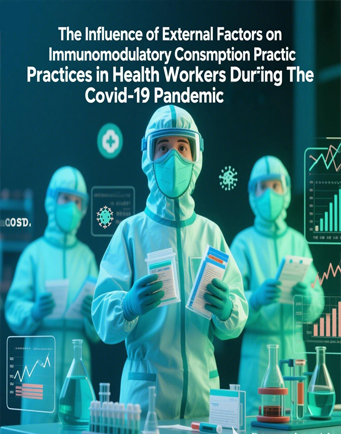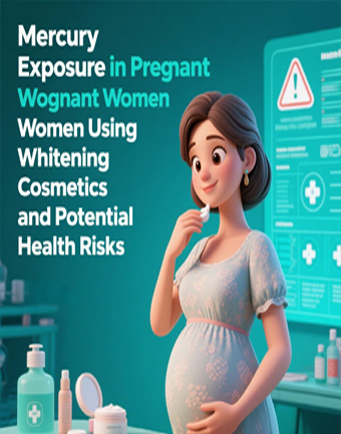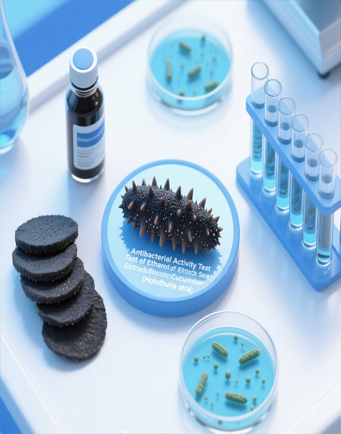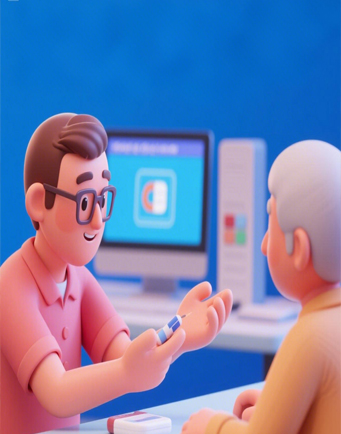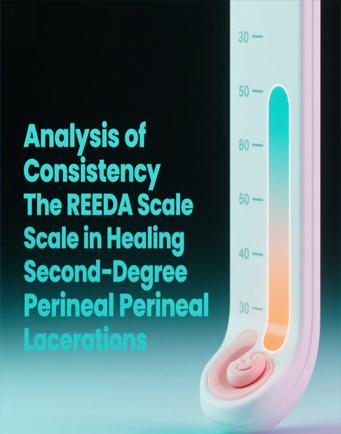Effectiveness of Purple Sweet Potato Extract and Disclosing Substance for Plaque Identification
Downloads
Oral hygiene is an indicator of oral and dental health which can be assessed based on the presence or absence of organic deposits, such as pellicle, materia alba (dental deposit), food residue, calculus, and dental plaque. Plaque is the cause of tooth decay among the world's population. Plaque on the tooth surface can be used as an indicator of oral hygiene. Poor cleaning can lead to stickier plaque and tartar after calcification. The thin plaque is almost the same as the color of the teeth, so that plaque cannot be seen with the naked eye. The presence of plaque that is formed from contact with oral fluids can be detected by using certain dye. This study aims to determine the Effectiveness of Purple Sweet Potato Extract and Disclosing substance for Plaque Identification among the children in Aisyah Orphanage, Tilatang Kamang Sub-District, Agam District. This was a quasi-experimental study with a post-test-only design. The samples of this study were 30 children at Aisyah Orphanage, Tilatang Kamang Sub-District, Agam District, with the inclusion criteria of children with permanent teeth and index teeth. The samples were selected through total sampling technique. The results showed that after applying purple sweet potato extract to the children at Aisyah Orphanage in Bukittinggi City, most of them had the Patient Hygiene Performance index (PHP) in the moderate criteria (50%). Furthermore, after applying disclosing substances to the children at Aisyah Orphanage in Bukittinggi City, most of them had the PHP index in the poor criteria (56.7%). The t-test independent statistical test results obtained a p-value of 0.000 (p <0.005), indicating a significant difference between sweet potato extract and disclosing substance. Disclosing substance was more effective than purple sweet potato extract in identifying plaque on the tooth surface. Further study is recommended to apply purple sweet potato extract with different concentrations as an alternative ingredient to identify plaque on the tooth surface.
Anggriani, R., Ain, N., Adnan, S., & Novianto, M. F. (2017). Identifikasi Fitokimia dan Karakterisasi Antosianin dari Sabut Kelapa Hijau (Cocos nucifera L var varidis). Jurnal Teknologi Pertanian, 18(3), 162-172. https://doi.org/10.21776/ub.jtp.2017.018.03.16
Arifian, E., Chairanna, I., & Prasetyowati, S. (2022). Hubungan Praktik Menyikat Gigi Dengan Debris Index Siswa Tunagrahita Di SLB B-C Optimal Surabaya. Jurnal Skala Kesehatan, 13(2), 113 - 121. https://doi.org/10.31964/jsk.v13i2.367
Asura, R. M. N., & Danan, D. (2021). Perbedaan Pasta Gigi Deterjen Dengan Tanpa Deterjen Terhadap Penurunan Plak Skor Pada Siswa SMPN 1 Martapura Timur. Jurnal Skala Kesehatan, 12(2), 140-148. https://doi.org/10.31964/jsk.v12i2.323
Britani, C. W., Ranimpi, Y. Y., & Nusawakan, A. W. (2017). Kesehatan Spiritual Lanjut Usia Di Getasan Dan Panti Wredha Salib Putih Salatiga. Link, 13(2), 12-23.
Chetruş, V., & Ion, I. R. (2013). Dental plaque-classification, formation, and identification. International journal of medical dentistry, 3(2), 139-143.
Ekoningtyas, E. A., Wiyatini, T., & Nisa, F. (2016). Potensi kandungan kimiawi dari ubi jalar ungu (Ipomoea Batatas L) sebagai bahan identifikasi keberadaan plak pada permukaan gigi. Jurnal Kesehatan Gigi, 3(1), 1-6. https://doi.org/10.31983/jkg.v3i01.1117
El Husna, N., Novita, M., & Rohaya, S. (2013). Kandungan antosianin dan aktivitas antioksidan ubi jalar ungu segar dan produk olahannya. Agritech, 33(3), 296-302. Retrieved from https://journal.ugm.ac.id/agritech/article/view/9551
Fatmasari, D., Musthofa, S., & Santoso, B. (2014). Efektifitas Buah Bit (Beta Vulgaris) Sebagai Disclosing Solution (Bahan Identifikasi Plak). ODONTO: Dental Journal, 1(2), 6-9. http://dx.doi.org/10.30659/odj.1.2.6-9
Fatmasari, D., Supriyana, S., & Sukmawati, S. (2017). Larutan Ubi Jalar Ungu dan Buah Bit Sebagai Bahan Identifikasi Keberadaan Plak Gigi. Jurnal Kesehatan Gigi, 4(1), 19-24. https://doi.org/10.31983/jkg.v4i1.2711
Fione, V. R. (2020). Ekstrak Ubi Jalar Ungu (Ipomea L Batatas) Sebagai Solusi Pewarna Alamiah Plak Gigi. Jurnal Ilmiah Perawat Manado (Juiperdo), 8(02), 130-141. https://doi.org/10.47718/jpd.v8i02.1197
Hambali, M., & Noermansyah, F. (2015). Ekstraksi antosianin dari ubi jalar dengan variasi konsentrasi solven, dan lama waktu ekstraksi. Jurnal Teknik Kimia, 20(2),25-35. Retrieved from http://jtk.unsri.ac.id/index.php/jtk/article/view/171
Harahap, M. A., & Masnawati, M. (2022). Pendidikan Kesehatan Tentang Sikat Gigi Pada Anak Usia Pra Sekolah. Jurnal Pengabdian Masyarakat Aufa (JPMA), 4(1), 34-38. Retrieved from https://jurnal.unar.ac.id/index.php/jamunar/article/view/731
Haryani, N. ., Mahmiyah, E. ., & Ayatullah, M. I. . (2019). The Use of Turmeric (Extracts and Squeeze) to Detect Plaque on Teeth. JURNAL INFO KESEHATAN, 17(2), 169–175. https://doi.org/10.31965/infokes.Vol17.Iss2.276
Ifadah, R. A., Wiratara, P. R. W., & Afgani, C. A. (2022). Ulasan ilmiah: antosianin dan manfaatnya untuk kesehatan. Jurnal Teknologi Pengolahan Pertanian, 3(2), 11-21. Retrieved from http://jurnal.utu.ac.id/jtpp/article/view/4450.
Irawati, T., & Mardiana, Y. (2018). Stabilitas antosianin dari ekstrak buah mangsi (phyllanthus reticulatus poir). Jurnal Ilmiah Hijau Cendekia, 3(2), 26-29. https://doi.org/10.32503/hijau.v3i2.275
Ismed, I., Sayuti, K., & Andini, F. (2018). Pengaruh Suhu dan Lama Penyimpanan terhadap Indikator Film dari Ekstrak Kelopak Bunga Rosella (Hibiscus sabdariffa, L.) sebagai Smart Packaging untuk Mendeteksi Kerusakan Nugget Ayam. Jurnal Aplikasi Teknologi Pangan, 6(4), 167-172. Retrieved from http://jatp.ift.or.id/index.php/jatp/article/view/267.
Khatimah, H., Hasanuddin, A. P., & Amirullah, A. (2022). Identifikasi Nematoda Usus Golongan STH (Soil Transmitted Helimnth) Menggunakan Ekstrak Daun Jati (Tectona grandis). Bioma: Jurnal Biologi Makassar, 7(1), 37-44. https://doi.org/10.20956/bioma.v7i1.18421
Laela, D. S., Mulyanti, S., & Nurnaningsih, H. (2021). Efektivitas Sari Buah Mulberry (Morus Alba L) Pada Plak Gigi Sebagai Bahan Alternatif Pengganti Disclosing Solution. Jurnal Riset Kesehatan Poltekkes Depkes Bandung, 13(1), 186-194. https://doi.org/10.34011/juriskesbdg.v13i1.1851
Lestari, D. P., Wowor, V. N., & Tambunan, E. (2016). Hubungan tingkat pengetahuan kesehatan gigi dan mulut dengan status kesehatan jaringan periodontal pada penyandang diabetes melitus tipe 2 di RSUD Manembo-nembo Bitung. e-GiGi, 4(2), 188-195, https://doi.org/10.35790/eg.4.2.2016.13926
Mega, N., Kusmana, A., Nugroho, C., Kamelia, E., & Miko, H. (2019). Efektifitas Larutan Buah Bit dan Larutan Buah Naga Merah Sebagai Bahan Identifikasi Plak Gigi Pada Mahasiswa Tingkat 1 Jurusan Keperawatan Gigi Poltekkes Kemenkes Tasikmalaya. Actual Research Science Academic, 4(3), 24-30. Retrieved from http://edukasional.com/index.php/ARSA/article/view/105.
Murni, T. A., & Listrianah, L. (2020). Perbandingan Mengunyah Buah Pir Madu (Pyrus Bretschneideri) Dengan Apel Fuji (Mallus Sylvestris Mill) Dalam Penurunan Skor Plak. Jurnal Kesehatan Gigi dan Mulut (JKGM), 2(1), 30-37. Retrieved from https://jurnal.poltekkespalembang.ac.id/index.php/jkgm/article/view/549.
Ngete, A. F. (2020). Penggunaan Pewarna Alami Sebagai Upaya Meningkatkan Kualitas Kesehatan. Jurnal Kesehatan Tujuh Belas, 1(2), 130-135, Retrieved from http://ojs.stikestujuhbelas.ac.id/index.php/jurkestb/article/view/25.
Nurhidayat, O. (2012). Perbandingan Media Power Point Dengan Flip Chart Dalam Meningkatkan Pengetahuankesehatan Gigi Dan Mulut. Unnes Journal of Public Health, 1(1), 31-35, Retrieved from https://journal.unnes.ac.id/sju/index.php/ujph/article/view/179.
Oktapraja, A., Murniwati, M., & Suprianto, K. (2021). Perbandingan Intensitas Pewarnaan Ekstrak Buah Terung Belanda (Solanum betaceum Cav) dengan Disclosing Solution Sebagai Bahan Identifikasi Plak Gigi. Andalas Dental Journal, 9(1), 51-59. https://doi.org/10.25077/adj.v9i1.190
Sherlyta, M., Wardani, R., & Susilawati, S. (2017). Tingkat kebersihan gigi dan mulut siswa Sekolah Dasar Negeri di desa tertinggal Kabupaten Bandung Oral hygiene level of underdeveloped village State Elementary School students in Bandung Regency. Jurnal Kedokteran Gigi Universitas Padjadjaran, 29(1), 69-76. https://doi.org/10.24198/jkg.v29i1.18607
Siregar, R. (2019). Pemakaian Buah Bit dan Ubi Jalar Ungu Sebagai Pewarna Alami pada Pemeriksaan Plak Siswa/i SMP Negeri 4 Kec. Datuk Bandar Timur Kota Tanjung Balai. Jurnal Ilmiah PANNMED (Pharmacist, Analyst, Nurse, Nutrition, Midwivery, Environment, Dentist), 14(1), 64-68. Retrieved from http://ojs.poltekkes-medan.ac.id/pannmed/article/download/564/405
Sukendro, S. J., Sutomo, B., & Sariyem, S. (2016). Uji Efektifitas Kulit Buah Naga Berdaging Merah (Hylocereus Polyrhizus) Sebagai Bahan Pengganti Pewarna Plak. Jurnal Kesehatan Gigi, 3(2), 64-75. https://doi.org/10.31983/jkg.v3i2.6581
Utami, N. K., Amperawati, M., & Rizaki, M. I. (2022). Uji In Vivo Terhadap Ekstrak Kayu Secang (Caesalpinia Sappan L/Biancaea Sappan) Sebagai Disclosing Agent. An-Nadaa: Jurnal Kesehatan Masyarakat (e-Journal), 9(2), 203-207. http://dx.doi.org/10.31602/ann.v9i2.9031
Waty, S. (2022). Uji Aktivitas Antibakteri Formula Pasta Gigi Ekstrak Etanol Kulit Kayu Manis (Cinnamomomum burmanni) Dalam Menghambat Pertumbuhan Bakteri Streptococcus mutans (ATCC). Jurnal Ilmiah PANNMED (Pharmacist, Analyst, Nurse, Nutrition, Midwivery, Environment, Dentist), 17(1), 89-95. https://doi.org/10.36911/pannmed.v17i1.1273
Winarti, S. S. (2008). U., &Anggrahini, D. Extraction and Color Stability of Purple Sweet Potatoes (Ipomea batatas L.,) as Natural Dyes. Journal of Chemical Engineering, 3(1), 207-214.
World Health Organization. (2022). WHO remains firmly committed to the principles set out in the preamble to the Constitution. World Health Organization. Retrieved from https://www.who.int/about/governance/constitution#:~:text=Health%20is%20a%20state%20of,absence%20of%20disease%20or%20infirmity.
Copyright (c) 2023 JURNAL INFO KESEHATAN

This work is licensed under a Creative Commons Attribution-NonCommercial-ShareAlike 4.0 International License.
Copyright notice
Ownership of copyright
The copyright in this website and the material on this website (including without limitation the text, computer code, artwork, photographs, images, music, audio material, video material and audio-visual material on this website) is owned by JURNAL INFO KESEHATAN and its licensors.
Copyright license
JURNAL INFO KESEHATAN grants to you a worldwide non-exclusive royalty-free revocable license to:
- view this website and the material on this website on a computer or mobile device via a web browser;
- copy and store this website and the material on this website in your web browser cache memory; and
- print pages from this website for your use.
- All articles published by JURNAL INFO KESEHATAN are licensed under the Creative Commons Attribution 4.0 International License. This permits anyone to copy, redistribute, remix, transmit and adapt the work provided the original work and source is appropriately cited.
JURNAL INFO KESEHATAN does not grant you any other rights in relation to this website or the material on this website. In other words, all other rights are reserved.
For the avoidance of doubt, you must not adapt, edit, change, transform, publish, republish, distribute, redistribute, broadcast, rebroadcast or show or play in public this website or the material on this website (in any form or media) without appropriately and conspicuously citing the original work and source or JURNAL INFO KESEHATAN prior written permission.
Permissions
You may request permission to use the copyright materials on this website by writing to jurnalinfokesehatan@gmail.com.
Enforcement of copyright
JURNAL INFO KESEHATAN takes the protection of its copyright very seriously.
If JURNAL INFO KESEHATAN discovers that you have used its copyright materials in contravention of the license above, JURNAL INFO KESEHATAN may bring legal proceedings against you seeking monetary damages and an injunction to stop you using those materials. You could also be ordered to pay legal costs.
If you become aware of any use of JURNAL INFO KESEHATAN copyright materials that contravenes or may contravene the license above, please report this by email to jurnalinfokesehatan@gmail.com
Infringing material
If you become aware of any material on the website that you believe infringes your or any other person's copyright, please report this by email to jurnalinfokesehatan@gmail.com.



